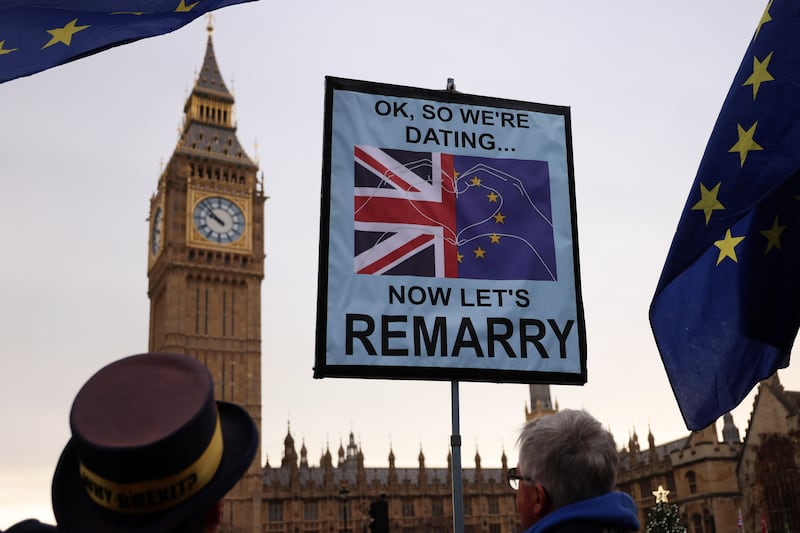Back in 2013, the market for new car sales in Ireland was only starting to dig itself out of the hole dug by the 2008 financial crash and subsequent recession. Total new cars sales that year reached 74,364 – a pretty dreadful number, but an improvement on the 57,000 cars sold in 2009.
Back then, the best-selling car was the Volkswagen Golf, which, in 2013, you could have bought for as little as €19,000. Seven out of the ten best-selling cars were either small or medium hatchbacks, with only two saloons (the VW Passat and BMW 5 Series) and one SUV (the Nissan Qashqai) making their sales presence felt.
All of that was about to change. For a start, 2013 – in a move that was far more about evening out the seasonality of the car market in Ireland, rather than the somewhat hysterical worries over the number 13 that were being bandied about Dáil Éireann – was the first year in which we had two registration plates, with new number plates arriving in January and July.
More significantly, as car sales began to recover through 2014 and 2015, the nature – and price – of the cars we were buying was about to take a dramatic turn.
READ MORE
Motorcheck, the car history checking service, has crunched the numbers on Irish new car sales in the ten years from 2013 to the end of 2023. The figures show that the same Volkswagen Golf was actually the best-selling car of that decade, with 37,164 sales over the period. VW was also the big overall winner, taking the top spot with 128,635 sales in total.
That might suggest a certain level of status quo about the Irish car market, but nothing could be further from the truth. Look at the car in second place in the 10-year sales chart. It’s the Hyundai Tucson, which lost three years to the Golf, as the second-generation Tucson wasn’t launched, replacing the Hyundai ix35, until 2016.
Now in its third generation, the Tucson has been a perennial best-seller in Ireland ever since, and the way things are going it will almost certainly topple the Golf as the ten-year best-seller the next time we look at these figures. Up to the end of 2022, the Tucson was sitting on 35,328 sales and still climbing fast – it’s added 2,359 sales so far this year.
Not only did the Tucson almost overtake the Golf in spite of the German hatchback’s three-year head start, it’s also the poster-boy for a sea-change in Irish buying habits. We’ve moved from a market dominated by small and medium hatchbacks to one that’s so SUV-heavy that we really are living up to our ‘51st State’, ‘Boston-is-the-next-parish-over’ Irish-American cliche.
You can see the inflection point in 2016, the year that the Tucson was launched in Ireland. It rocketed straight to the top of the best-sellers list that year, and in its wake came wave after wave of SUVs and crossovers, each vying for a top-ten slot. In 2023, seven of the top-ten selling cars are SUVs or crossovers.
The graphs are slightly muddled, as pointed out by Motorcheck’s managing director Michael Rochford: “The graph on body types by year shows that saloons fell away sharply after 2016 and SUVs continued to rise, but hatchbacks never really fell away. Although it’s difficult to be precise since some of the vehicles that are classed as ‘hatchbacks’ or ‘MPV’ at registration could conceivably fall into the small SUV category but unfortunately they are registered with a different body name. For example, cars such as the Seat Arona, Renault Captur and Renault Arkana are all logged as hatchbacks, as is the Toyota C-HR.”
So it’s important to dig into the figures, as Rochford emphasises: “Perhaps it is more telling that in 2022 the only three body types worth taking about are the SUV, Hatch and MPV and all three are almost on an equal footing, whereas the saloon has fallen away completely. If you look at the picture in 2022 you see that seven of the top 10 selling models are SUV or mini SUV and of the three others in the top 10 that are not SUVs, two are on the decline in terms of sale”
It’s not merely the size and bulk of the car’s we’re buying that’s significant, although heaven knows from an environmental point of view that’s disastrous enough. Irish buyers, helped by generous finance packages often bankrolled by the car makers themselves, have moved significantly upwards in how much they’ll spend on their cars.
As pointed out, in 2013, you could buy a VW Golf for as little as €19,000. Now, the best-selling Tucson costs, at minimum, €37,285 and the average price paid for a new car in Ireland has spiked above €33,000. Clearly, spiralling costs in recent years have driven that, but up to 2019 it was clear that Ireland’s car buyers were prepared to spend more than before.
Has that come to a crashing halt, given the recent squeeze of the cost of living and climbing interest rates? “It is too difficult to predict” says Brian McNulty, the commercial director of Mobilize Financial Services Ireland, which used to be called Renault Bank until a recent rebrand.. “The war in Ukraine created a lot of uncertainty in the finance markets and interest rates have been impacted. Mobilize Financial Services is central to the Renault Group’s strategy and it helps us focus even more on developing products that support usage, flexibility and affordability. In recent months we have demonstrated our ability to reduce these barriers and we will continue to adapt during these challenging times.”
Of course, Mobilize is in a relatively good position as it provides loans for Dacias, arguably the only brand that remains committed to providing genuinely affordable vehicles (even Skoda has moved into the semi-premium sphere at this stage). Beyond that, Mobilize wants to turn buyers, some of them anyway, into subscribers. “Our objective is providing customers with an offering linked to usage, for most customers their car sits outside their front door for the vast majority of time” McNulty told The Irish Times. “There are huge efficiencies to be made for the environment with a pay-per-usage payment model. In the coming months and years, we’ll provide more products and services that support this strategy. In terms of duration the customer will ultimately decide but we believe that a car will have more users over a longer period of time.”
Looking at the top-ten selling brands of the past decade, it’s noticeable that most are on a downward trend at the moment, but the graph lines for Toyota, Hyundai and Kia are all pointed skyward. Expand it to the top-15 selling brands, and you’ll see that Dacia, too, is in a distinct upwards trajectory. It’s likely then that these brands are the ones which will dominate the Irish motoring landscape for the next decade, as we finally push through the electric barrier.
Then again, perhaps not. Wipe out all of these graphs and go back to the 2013 sales charts. You’d have been hard pressed to bet against the likes of the Golf, the Fiesta, the Focus and the Astra continuing their domination of the market for many years to follow. That it didn’t pan out like that just goes to show how fast change can happen, and how far that change can take us.





















